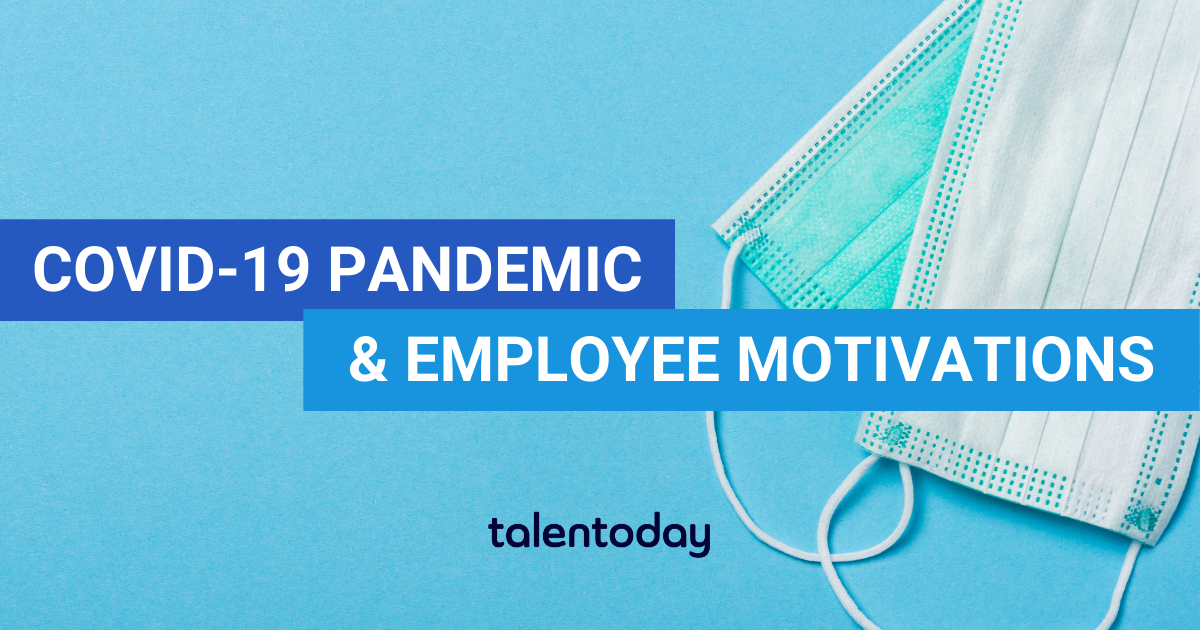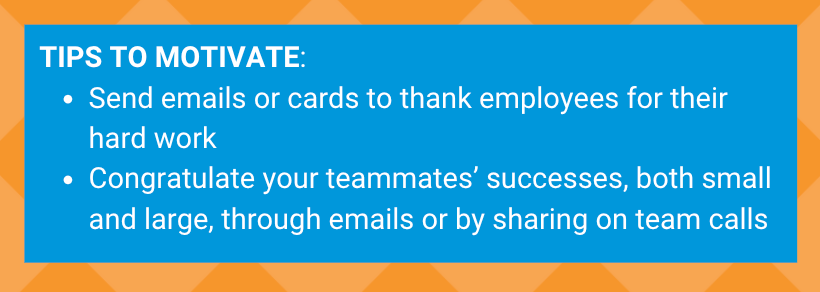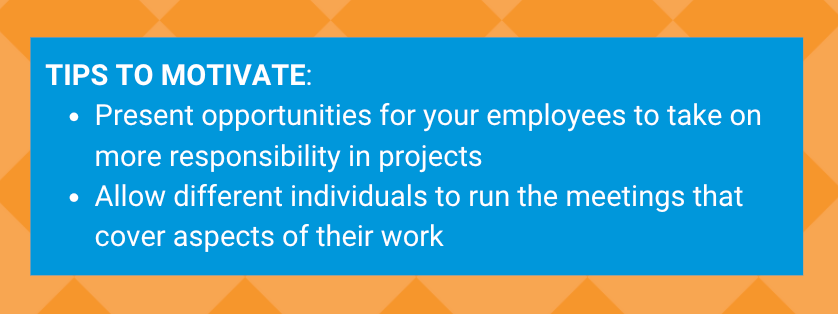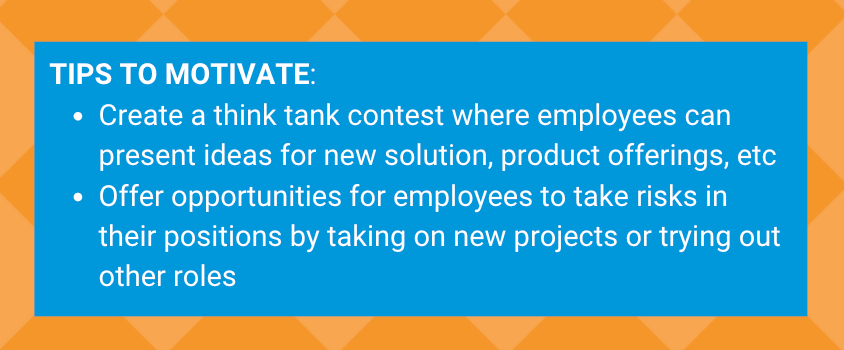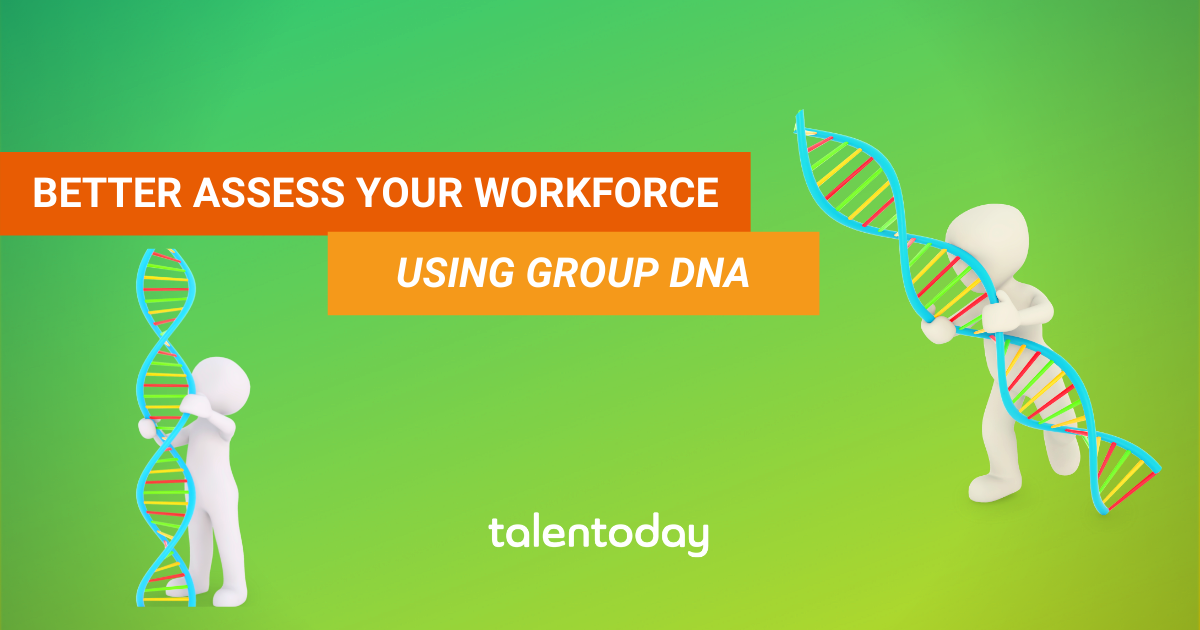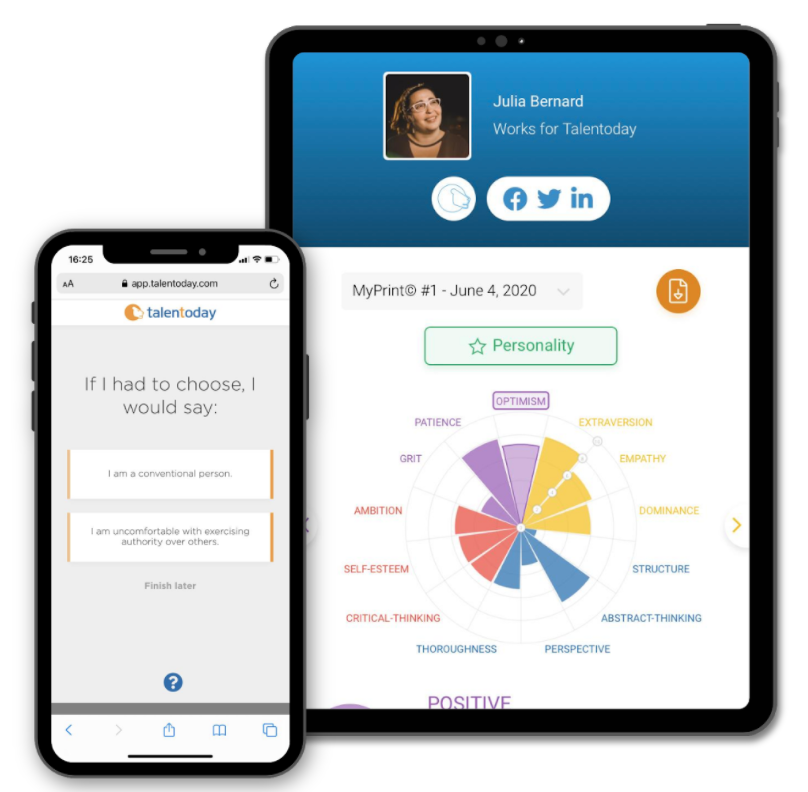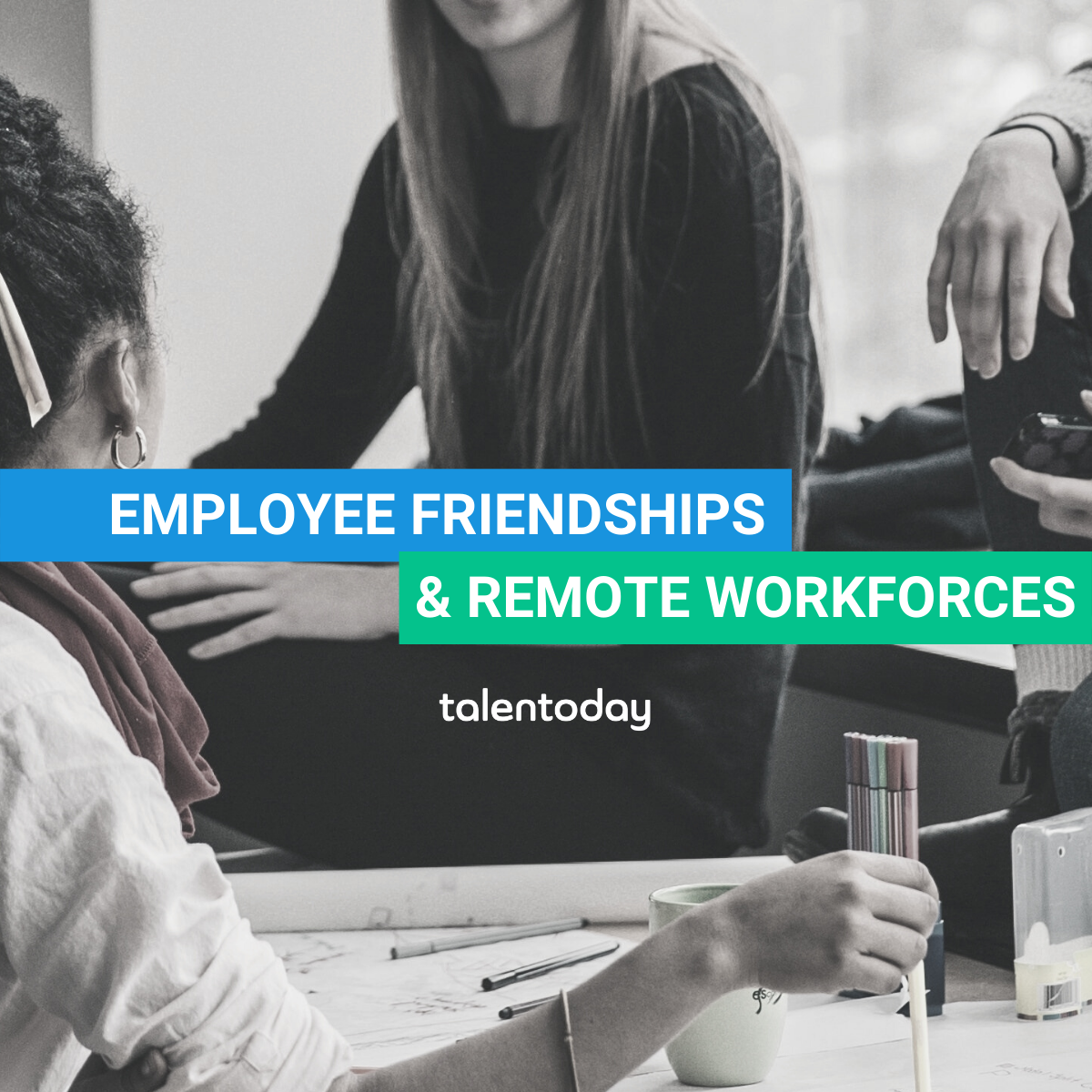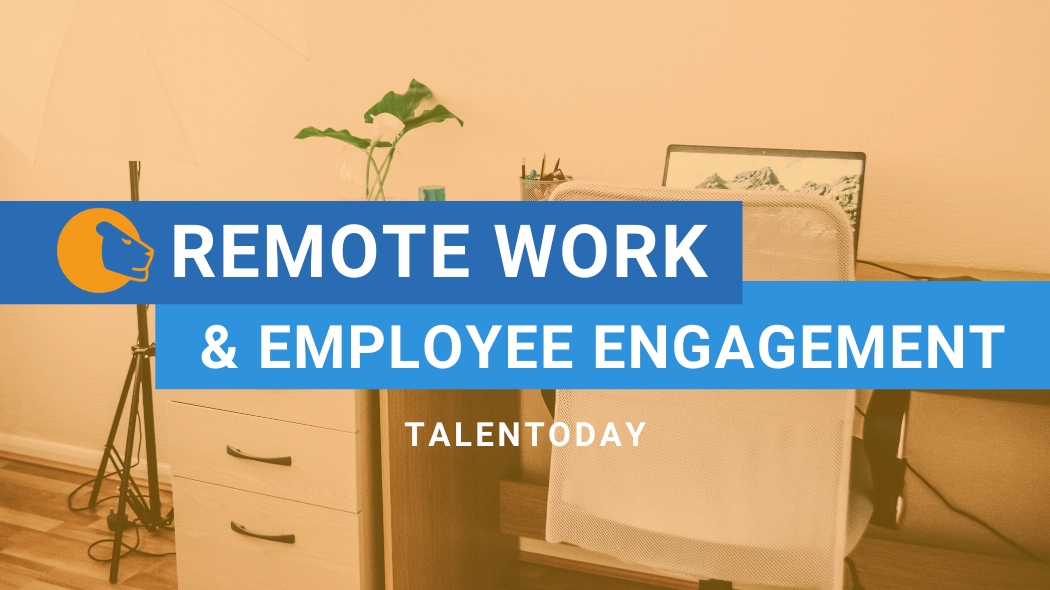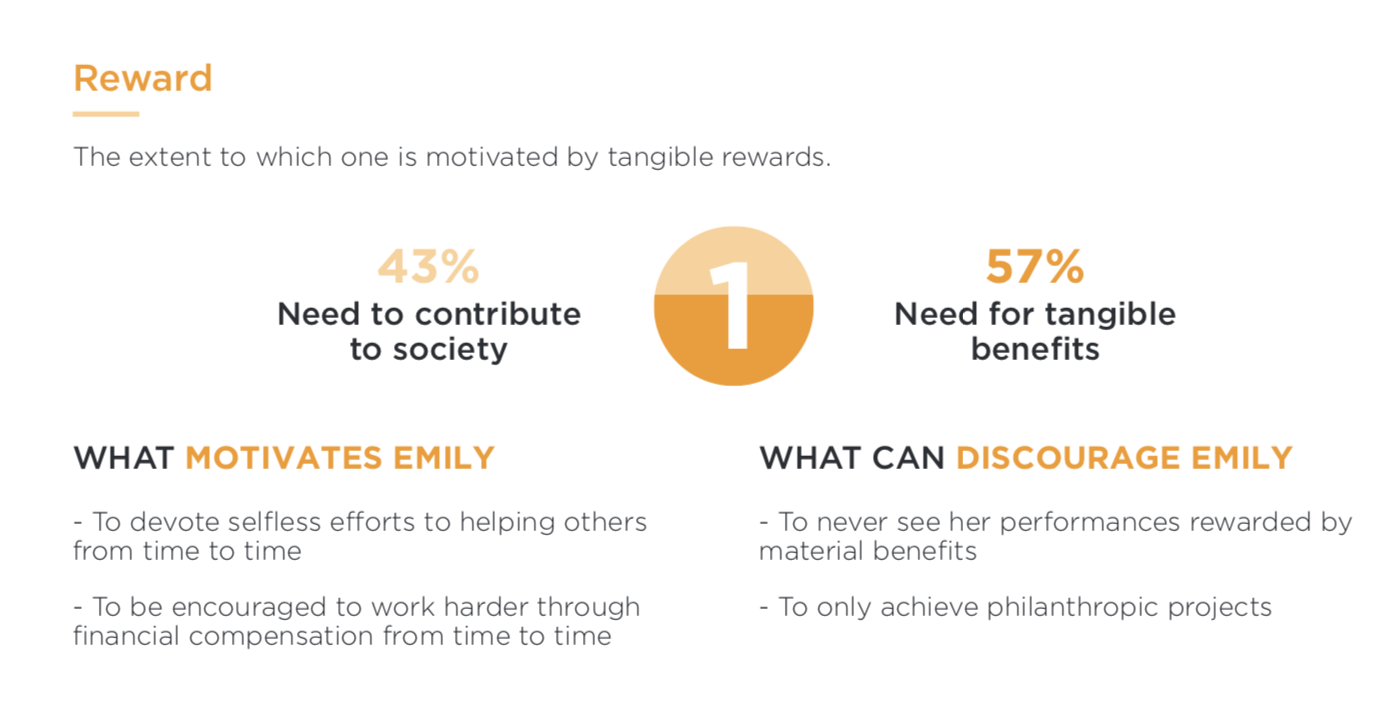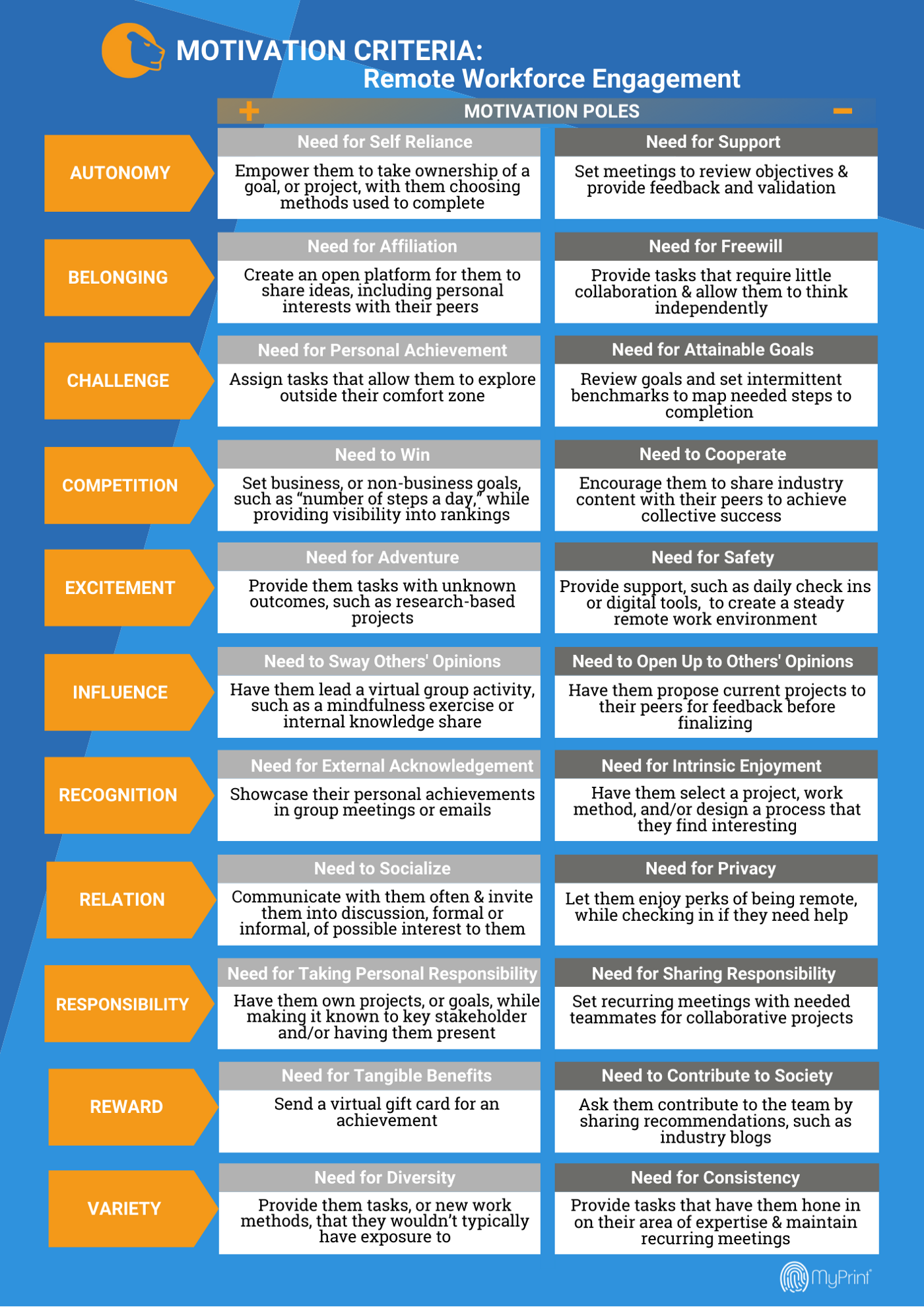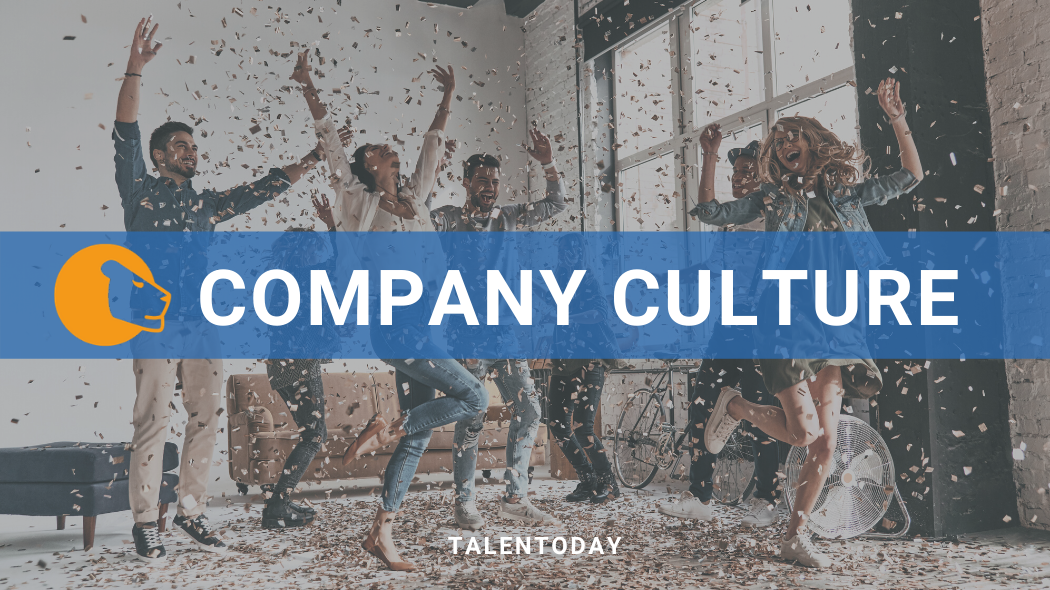COVID-19 Impact on Motivations in the Workforce
It’s been one year since COVID-19 took the world by storm. Countries started to close their borders and government safety regulations were enforced. As a result of unpredictable lockdown and safety measures, each person’s environment has changed in some way. For millions of typical “office workers” this meant working from home, while those deemed essential continued to go into work with increased risk. With all of this change happening externally, there is internal change that comes with it. How has the move to a remote workspace, social distancing, new health measures, and other pandemic outcomes impacted the things that motivate your employees? Let’s learn more about how motivations work first.
One of the most widely accepted motivation theories is Maslow’s Hierarchy of Needs. You may recognize the motivation pyramid that has found its way into most every psychology, marketing, and ethics textbook, and it is the foundation for the Talentoday MyPrint motivation dimensions as well! There are five stages of motivation included in the pyramid: physiological needs, safety needs, love and belongingness needs, esteem needs, and self-actualization needs. The basis of Maslow’s theory is that everyone starts at the bottom stage of the pyramid with their most basic physiological needs: food, water, clothing, and shelter. Once those needs are met, we are able to work our way up to safety, and so on.
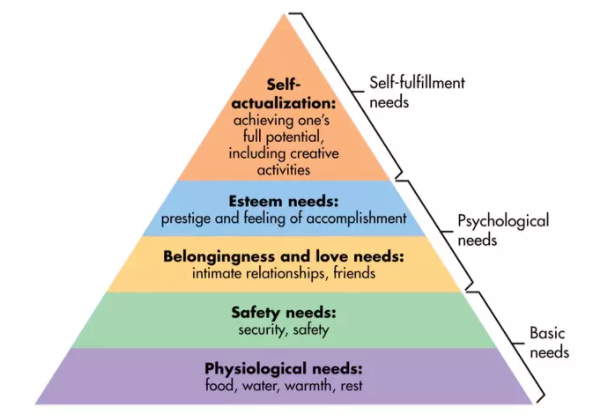
Our environment plays a huge role in our motivations and where we’re at on the pyramid. For example, during the COVID-19 pandemic, we have seen a lot of people focus on addressing their basic safety needs, like employment and financial stability. Other factors that can impact our motivations include, but are not limited to, changes to our work environment, major family events such as births or deaths, changes in our relationship status, living situations, or unforeseen financial events.
Motivations and MyPrint®
Since we know that motivations are so dependent on our environment, we decided to take a look at how the COVID-19 pandemic has impacted the motivations found in MyPrint®. To do this, we calculated the motivations that saw the biggest increase amongst assessment takers before and after March 2020. We observed three dimensions that had a larger increase than the others: Recognition, Responsibility, and Excitement.
Recognition: Need for External Recognition
People who have a need for external recognition are driven to work harder when they receive positive feedback and praise from coworkers. When working in an office environment, this will naturally happen more frequently; you tell an employee they did great on a presentation while passing their desk, or congratulate a coworker on hitting a milestone while you’re getting your morning coffee. However, in a remote environment, we need to be more intentional about giving that recognition. Since March 2020, a total of 81% of the global workforce has had their workplace fully or partly closed. Whether this impacts someone directly, or if they are seeing this happen with their friends and loved ones, receiving that external recognition can help to reassure individuals that they are doing a good job and motivate them to continue the good work.
Responsibility: Need for Taking Personal Responsibility
People who have a need for taking personal responsibility are comfortable being held accountable for others’ actions, regardless of error or failure, and are more comfortable being accountable for their own work as well. Moving into a remote work environment means that individuals need to take on more personal responsibilities than they did before: from managing all of their time to taking on pieces of projects that they might not have needed to before. For some people, having more control over their work environment can create that drive to keep them motivated at work.
Excitement: Need for Adventure
People with a need for adventure are driven by situations that offer thrill, seek to take risks and are very tolerant of unpredictable situations. A lot of people have experienced a more stagnant environment since March of 2020. Whether it is due to stay at home orders, travel restrictions, or lack of a commute, we are all going through it. Because of this, it is not surprising that people are craving more adventure in their lives. Work can be a great place to create excitement — from new opportunities to new roles or training, providing an environment where employees can take more risks and try new things can lead to a more engaged workforce.
Check In With Your Workforce
Your workforce is going to evolve over time, and it is important to keep up with those changes! Whether it’s a global pandemic to impact the shift in motivations, or if it’s typical life events taking place, you want to make sure that you are evolving alongside your employees. Changes to an employee’s motivations means adjusting your management style, and by keeping up with these changes, you can create the most engaging environment for your workforce as possible.
We recommend employees take the MyPrint assessment every 6–12 months. Interested in learning more about MyPrint and how our solutions can help you better understand your workforce? Contact Talentoday at customer@talentoday.com to learn more about our assessment and services!
Better Assess Your Workforce Using Group DNA
Every living organism is made up of a unique genetic code of DNA. Although the same organic components are used the outcomes can be vastly different from one another. The same thing goes with teams. Think of your work team as a strand of DNA. Some team members might share certain common traits with one another, and those become a prominent part of your overall team behavior. Similarly, having variety in your strengths can also increase team synergy. Losing parts of your team, rearranging responsibilities, or adding more members to your group can all impact the outcomes, and being able to effectively measure and assess your workforce enables you to understand and guide your team to reach their full potential.
Assessing for hiring
There are multiple things to consider when assessing a new hire for your team. Having a thorough understanding of their background and skills, for example, are important for making sure that the individual has the ability to do the job. These things can be assessed using various methods such as Structured Interviews, reference checks, and based on education or previous experience.
Another important aspect to consider when hiring for your team are the soft skills that an individual possesses. Finding the strengths that they will bring to your team and seeing how they will fit in with your team’s current soft skill DNA are important to maximize each person’s potential and help your team to stay engaged and successful in their work.
When assessing individuals’ soft skills be sure to use a valid and reliable tool rather than going off a gut feeling. The MyPrint® is a scientifically backed tool that is both valid and reliable for use in the workplace. The 155 item questionnaire provides detailed insight into an individual’s personality traits and motivations as well as their professional behaviors. This information can be used when hiring a candidate to see if their strengths fit in with what the role requires, as well as to get a better understanding of environmental or culture fit.
Assessing your current workforce
Assessing your current workforce helps to ensure that employees are receiving the proper guidance and support they need to do their jobs well. This can be done through performance reviews, measuring key metrics, or frequent 1:1 check ins with your employees.
In addition to goals and performance, understanding your team from a soft-skill point of view is beneficial for working as a group and engaging your employees. Once your entire team has been assessed using the MyPrint®, you can view their results via their individual reports, or by using the new Group DNA feature that is coming soon to the Talentoday Manager platform. Being able to see where your team as a whole falls in terms of their soft skills can help you to ensure that your team is using their strengths as well as figuring out where the gaps are that you need to fill. In addition, being able to see the common motivators among your team helps to come up with ways to motivate and engage your workforce from a global perspective which is helpful in certain situations where you can’t tailor the work environment for each individual.
First look at the Group DNA feature
Below is a sneak peak of what the Group DNA feature looks like! This example was made using 10 members from our very own Talentoday family. You can see that our team is made up of individuals who are Extroverted and Positive, which is always fun when we have team celebrations! We are also Confident, meaning we are self-assured in our abilities (rightfully so, we have very talented people on our team!) and we are Big Picture thinkers, always keeping those long-term solutions in mind as we continue to innovate and create new features.
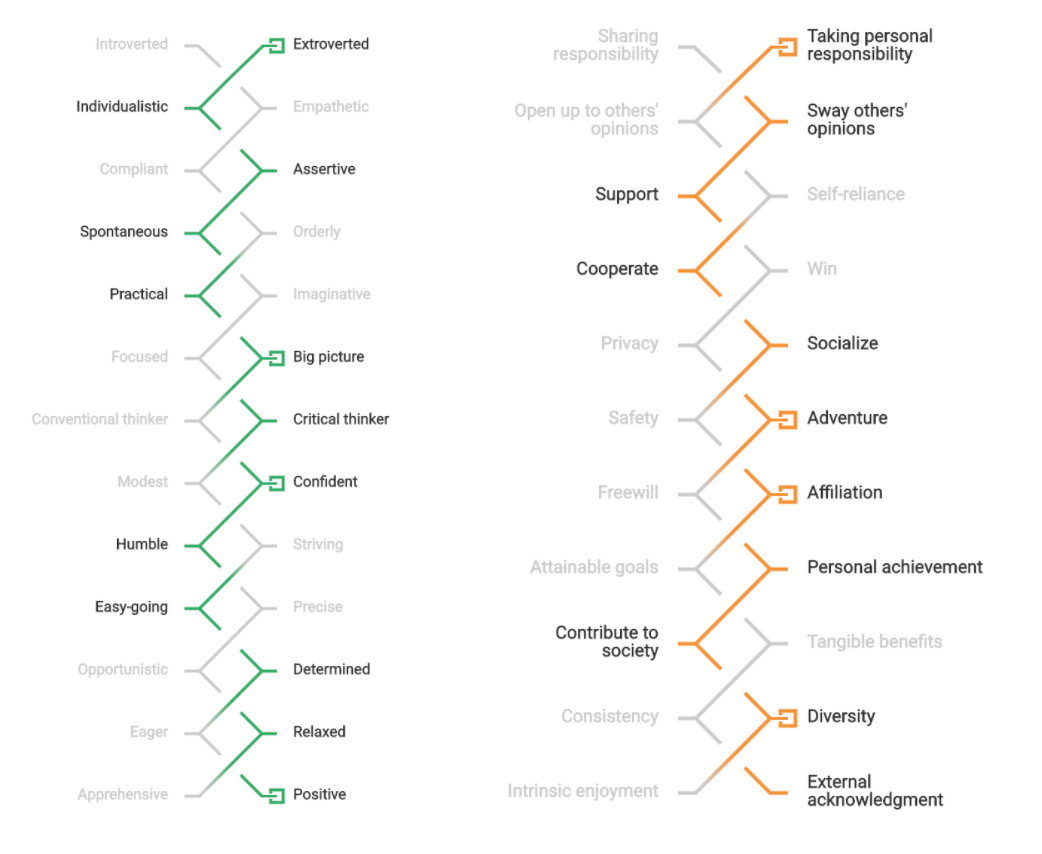
When it comes to motivating our team, the most important things are that we have Personal Responsibility for our work, but still have a Need for Affiliation and to share common interests with our peers. We also like to be kept on our toes with a Need for Adventure and Diversity — we like to spice things up around here!
Why this is important
The purpose of the Group DNA feature, and assessing your team’s soft skills, is to help visualize the data. The information provided is not necessarily indicative of work performance, but it can be used to understand the work culture of a population.
By understanding this data and keeping up to date with the DNA of your team, you can work to create an ideal work environment by setting relevant goals and rewards, as well as by solving conflicts the right way!
Are you interested in learning more about the upcoming Group DNA feature, or are you looking for additional resources and support? Email Talentoday at customer@talentoday.com to learn more about our assessment and services!
Employee Friendships in 2020
If you’re like me, you’re probably missing your work friends right now. Even if you’re not like me there’s still a pretty high chance of that! Millions of people around the world have been working from home amidst the COVID-19 pandemic, and working in pajamas has become the new normal… okay, maybe not everyone is in pajamas.
Even though we might not be seeing our work pals it is important to find ways to stay connected. A study by Gallup¹ found that workplace friendships are one of the strongest predictors of productivity. In addition, those who have strong work relationships are more engaged, produce higher-quality work, and have an overall higher state of well-being. That same study found that in order to have a thriving day we need at least six hours of social time. Sound impossible? It’s not as difficult as you might think.
The ‘New Normal’
With the ‘new normal’ in the workplace including remote work, social distancing procedures, alternating schedules, and other obstacles that make our social interactions more difficult to achieve, we need to be more intentional about our workplace friendships. These challenges are something that every company is learning to navigate, and it does not have to come at the expense of employee relationships and well-being.
A study done in New Zealand after a series of earthquakes forced many people to move into remote working found that the biggest area of concern to employees was the social cost². This included professional and personal isolation, limited team interaction, loss of visibility and development, and lack of face-to-face communication. Thankfully we live in an age where technology can be our friend and counteract a lot of these concerns!
Zoom, Zoom, Zoom!
Raise your hand if you have used Zoom in the past month. There have been between 200–300 million daily meeting participants on Zoom during the beginning months of COVID-19³. Birthday parties, happy hours, book clubs, classes, and business meetings are just a few of the many social gatherings that have turned virtual in 2020. Leveraging video conferencing can help bring employees together as well!
Do you normally eat lunch with your coworkers every day? Maybe pick one day each week to have a ‘virtual lunch’ with those that you’d normally (or not normally) eat with. Even a quick instant message to your work buddies to ask a question, or simply share what you’ve been binge watching on Netflix, can help add to that six hours of social time needed for a thriving day!
Working in a virtual environment also gives employees the opportunity to reach out to those that they would not normally have the opportunity to work with. Whether it is collaborating on a project with individuals in other offices or departments, or simply reaching out to colleagues to get to know them better, the virtual workplace gives everyone a chance to create new connections that aren’t determined by physical proximity.
MyPrint® for the Virtual Age
With virtual and remote teams being the new normal, it might take a little more creativity to bring your team together! Some fun events that we at Talentoday have done to stay connected are virtual happy hours, knowledge sharing sessions from different departments, and a MyPrint® ‘Guess Who’ game!
As new teammates are being onboarded into a virtual workplace, it can be difficult to get to know each other in the same way you would when meeting face-to-face. You can help to jumpstart these new workplace connections by leveraging a lot of the tools that the MyPrint® assessment provides! Sharing your dominant personality traits, learning how to motivate one another, or reading through your Collaboration Report together can help alleviate some of the pains that come with a virtual working relationship.
No matter what your new normal looks like, whether it is back in the office or in your pajamas at home, MyPrint® can help you and your team to continue to adapt and grow together!
Looking for additional resources and support? Email Talentoday at customer@talentoday.com to learn more about activities like the MyPrint ‘Guess Who’ game and other services!
References
¹ Rath, T. & Harter, J. (2010). Your friends and your social well-being.
Business Journal.
https://news.gallup.com/businessjournal/127043/friends-social-wellbeing.aspx
² Donnelly, N. & Proctor-Thomson, S. B. (2015). Disrupted work: Home-based teleworking (HbTW) in the aftermath of a natural disaster. New Technology, Work and Employment, 30(1), 47–61. https://doi.org/10.1111/ntwe.12040
³ Iqbal, Mansoor (2020). “Zoom Revenue and Usage Statistics (2020).” Business of Apps, www.businessofapps.com/data/zoom-statistics/.
Use MyPrint® to Engage Your Remote Workforce
In the early months of 2020, HR professionals and managers have been faced with the biggest unilateral shakeup that doesn’t discriminate against industry or country borders, the COVID19 global pandemic. Workplaces with previously strict or conservative remote work policies may find themselves in a non-negotiable situation as “social distancing” is the new norm; that of course, is if you’re lucky enough to work in an industry or position that allows you the ability to work from home. While some may find themselves out of work, others are on the frontline of the pandemic, such as medical staff and grocery store workers. For managers creating an office at home, it poses the question: how do I be present and engage my team virtually?
At Talentoday, we have a passion for unlocking the keys to employee engagement, management and teamwork, which is the driving force behind our MyPrint® assessment. Through our assessment, coupled with our web application, we offer digital solutions to managers for effectively engaging their team. While our assessment wasn’t originally designed to provide instructions for remote team management through soft skills, we’ve been able to identify the direct correlation between results and how to put this knowledge to use in a remote work setting. The below is a step-by-step guide, with advice, on how to leverage assessment results for your remote team.
Step 1: Have your team spend 20–30 minutes completing the MyPrint® assessment.
Immediately after completing the assessment, they’ll have access to their personality radar, motivations and professional behaviors. While some of your team may additionally be experiencing a period of self-isolation, or having limited social exposure, this allows for dedicated time for a bit of self-care and self-reflection, by allowing them to take a deep look into their strengths (or potentially some areas they could seek additional training during this remote period).
Step 2: Look at the unique motivations across your team and figure out what motivates, and discourages, your team.
Working from home, coupled with isolation, some may experience a lag in productivity and engagement. As a manager, this allows you the opportunity to step in and rally for success. Within the motivation poles, managers are given tailored guidance based on individual results for what motivates an employee, as well as insight on what can discourage them. See below for an example:
Step 3: Start tailoring motivation to individual results and empower an engaged remote workforce.
After taking a look at your teams’ results, you’ll notice that there are 11 motivation categories, with two different criteria for each motivation. We refer to these criteria as either the “positive side,” at the high end of the pole, and the other as the “negative side,” with it being on the lowest end of the pole.
In the below graphic, you’ll see engagement examples that align to both the “positive” and “negative” sides of the poles to help tailor motivations to individuals on your team.
Long after the COVID19 pandemic is behind us, Talentoday will still continue to provide quality solutions that help professionals make empowered decisions through data analytics. To keep building on the momentum sparked through remote work engagement, our solution offers additional features and insights; whether it’s learning how to best collaborate with another individual or asking more meaningful interview questions tailored to their MyPrint® results, we look forward to continuing to serve our global community and provide purpose during this time of uncertainty.
Ready to take the MyPrint® assessment? Set aside 25 minutes, in a non-distracting space, and click “Take the free test” on Talentoday’s website (www.talentoday.com).
For more information on Talentoday and how to utilize our reports and features, reach out to us directly at customer@talentoday.com for both existing and prospective customers. For more information about our science and product, visit our company website.
The ROARing Twenties at Talentoday
To be honest, at Talentoday, the new hire experience means entering into a workplace of organized chaos. As many rapidly growing companies can relate to, having a world-class employee experience means that you’re in a balancing act between fostering employee development and driving business results. For Talentoday, we didn’t do it without some help. Following Talentoday’s acquisition by Medix in late 2018, the team adopted a new ambition for achieving results as a double bottom line company, meaning that we focus on both our profit and purpose.
Why do we do what we do?
Early in 2019, the team sat down and asked one simple question, “Why do we do what we do?,” to better understand the purpose of why we really come to work everyday. On an individual level, the Talentoday team is home for industry experts, ranging from software development, to cognitive science and operations, but being a double bottom line company means getting to the unified core of why each person has decided to put their passion into Talentoday. On its surface, the question posed a number of answers from “to provide the best psychometric assessment” to “having the best user experience”, but getting to the true core — our core purpose — it came down to the single idea of “empowering growth.” For our team, we come to work each day to empower the growth of the clients and members that we serve, but also to empower the growth of each other by putting our core purpose at the forefront of our employee experience.
Rally for Success
Working on the Talentoday team, each person is given the freedom to contribute to cross-departmental goals. It may seem out of character for a developer to be updated with sales objectives, but at the end of the day, our goals are connected. Meaning, all people are given visibility into company-wide goals and can contribute by making connections or sharing past experiences, thus winning as a team.
With our departments being highly specialized, creating a proper outlet hasn’t always been easy, but we’ve been able to make strides by offering an open platform through company meetings and communications, while providing an open invitation for feedback. Our team’s contributions are without a doubt how we achieve success, but following those contributions with recognition is key.
Recognition creates space to reflect on how we achieved success while celebrating the wins. It’s important to note that recognition can come in many forms, such as a ROAR (statement of recognition) or a cruise down the Seine, but no matter the size of the success — or the size of the recognition — it’s important to stop and celebrate.
The Only Constant is Change
By the time this article is published, it would be no surprise if within our team, or product, something has changed, but that doesn’t scare us. Change means that we’re striving towards our goals. Product development doesn’t stop, client needs change, and technology improves, so it’s safe to assume that employee needs are evolving in sync. Adopting an idea of constant change has allowed us to take a holistic approach to our employee experience. Remember the balancing act metaphor at the beginning? At Talentoday, our employee experience is a combination of industry best practices, business needs, and real employee feedback, with the goal of fulfilling our core purpose and ultimately people choosing the Talentoday team as their employer of choice.
To date, we’re not far into 2020 and it’s been a busy year for Talentoday — while some may call it ROARing! With a beautiful new office and growing team, we look forward to keeping our chaos organized, employees engaged, and product innovative as we take on the new year.
If you’re looking for more information on joining the Talentoday team, contact our HR department at recruitment@talentoday.com and or visit our Welcome to the Jungle page for current openings!
Leveraging Motivation and Engagement and Navigate Change

In response to an ever-evolving economic environment, companies undergoing institutional change look to leverage the power of employee engagement. However, true employee engagement cannot be imposed, and HR professionals must establish an internal policy of valuing employees before asking them to serve the company’s interests. According to a 2018 CXP survey (1), HR professionals are facing many additional challenges in their role, such as HR quality of service, data reliability, regulatory compliance and administrative productivity. In fact, HR professionals need to have a reliable HR service before tackling the commitment to business transformation through engagement. This is paradoxical in a rapidly changing world, where it is necessary to be agile and where employee engagement is the key to success. This may come as a surprise, the notion of engagement appeared a while back in the 1980s, when companies understood that employee engagement provided a definite competitive advantage (2); yet a lot of work is still to be done to achieve that ultimate goal.
Engagement from a Motivation Perspective
It is not easy to engage employees to serve the interests of their respective organizations. They must first motivate them. Since motivation is intrinsic to each individual and is correlated to their own values and personality, to grow a business, managers need to consider each team’s culture as a unique set of personalities and motivations. It is only by doing so that they can foster engagement and allow the organizational change to happen (3).
Engaging People During Times of Change
Engaging individuals requires a clear definition of the change expected for the working teams, a simple explanation of intent and a convincing argument for change. Managers must also give some elements on the behavior expected of teams and a reasonable timetable. Engagement depends heavily on the relationships between managers and their teams, during times of change it’s important for managers to focus on these relationships to achieve desired results. In doing so, it’s necessary to revisit management methods. For success it’s found that managers must be able to listen, be empathetic, honest and transparent towards their teams (4).
Becoming Human Centric
Companies are increasingly focusing on the individual’s place in the collective and are developing “symmetry of care,” i.e. they are making the quality of the relationship with their employees equal to the one they maintain with their customers. This concept, which appeared in 2007 in the book “Du management au marketing des services” by Benoît Meyronin and Charles Ditandy, is one of the levers of any transformation process. Vineet Nayar’s global success book “People First, Customers Second” goes further by putting employees before customers and is a global success. He advocates management through trust, because according to him, operational employees carry the value of a company. In the front line with customers, they are the ones who bring the real added value because they are willing to create tailor-made services or products capable of meeting the needs or challenges of the market.
In short, the agile transformation of a company takes its momentum from the revolution in managerial methods and leads to cultural changes that value the entire social body.
Sources:
- Employee Engagement and Change Management 1,Dr. C. Swarnalatha , 2,T.S. Prasanna,1,Professor & Head, Department of Management Studies, ANNA UNIVERSITY, 2013.
- Eight best practices of change : engagement, John Quereto, Expresswork,, August 8th, 2017.
- Employee Engagement and Organizational Change, Stavros Georgiades, Frederick University, January 2015.
People don’t leave companies they leave managers.
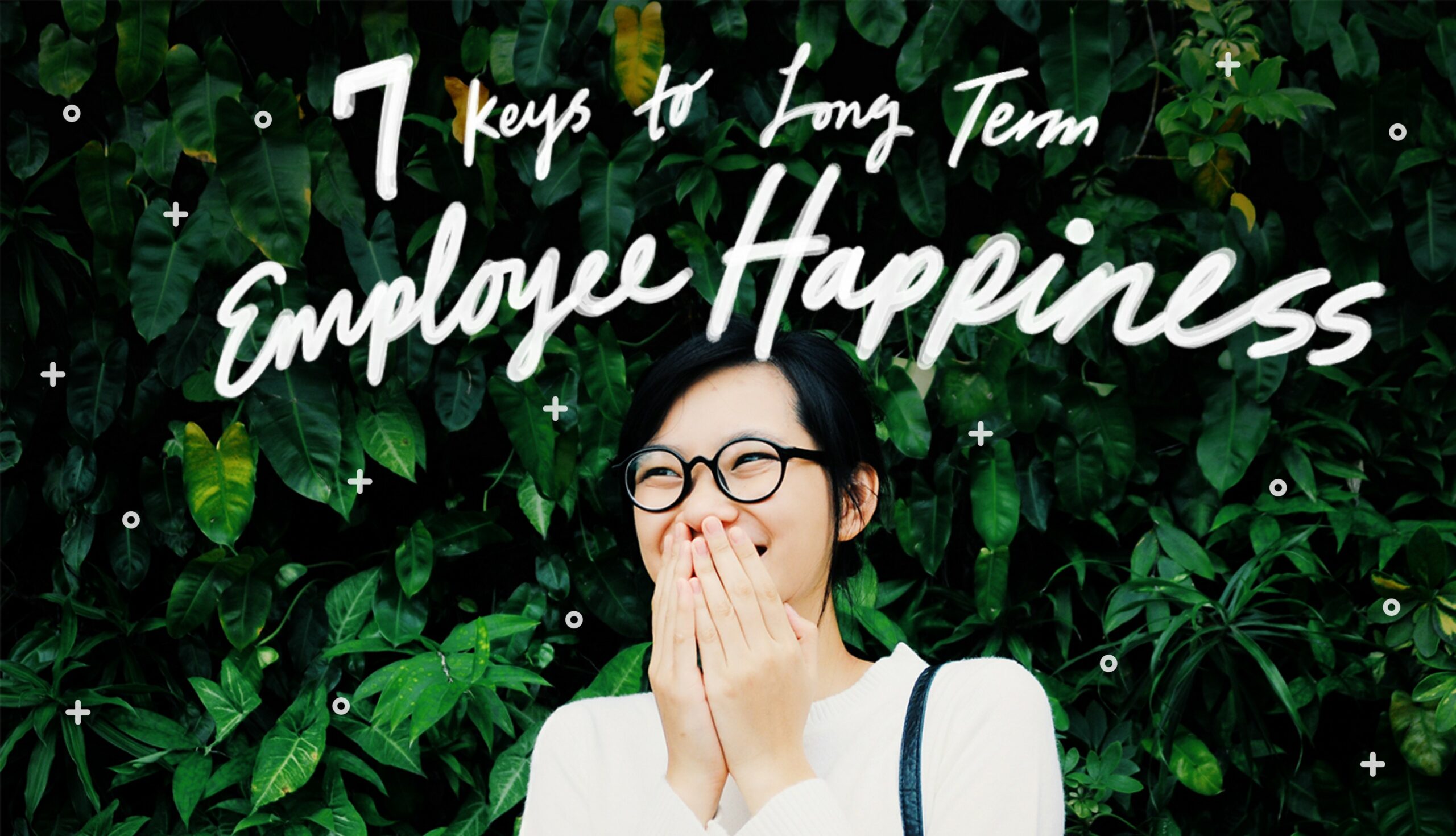
7 Keys to Long Term Employee Happiness
When employees quit, it’s not their company they’ve had enough of, it’s their managers.
Forbes reports from multiple data sources like Gallup and Dale Carnegie that 60–70% of employees are not working to their full potential or engaged with the work they’re doing. That’s a frightening majority! And worse, the cost in lost productivity to U.S. companies is more than $450 billion.
There are reasons beyond the boss relationship that might cause an employee to become disengaged and quit. From personal reasons (Harvard Business Review reports a 16% job hunting spike surrounding when people attend school reunions!) to changes in an organization, like layoffs, which can create insecurity. But the key relationship that will make or break an employee’s success at a company is the one he has with his boss. As Harvard Business Review points out, “in general, people leave their jobs because they don’t like their boss”.
The disengagement numbers are shocking, but it’s also an incredible opportunity to increase productivity through making some positive changes.
- Analyze the flight risk of employees, before they leave. Some companies use an outside firm like Joberate to track who employees are connecting with on social media to predict who might be thinking of leaving.
- Create an open dialogue around motivation and job satisfaction. Conduct “stay” interviews to touch base with employees regularly.
- Get data that delves deeply into a person’s motivations with a tool like the Talentoday Manager.
- Offer internal position openings to employees thinking of leaving. Harvard Business Review highlighted Credit Suisse as using this tactic to reduce attrition of 300 employees and saving the company at least $75 million.
- Give employees more freedom. A study of job satisfaction done by Tiny News showed that “those unfortunate souls whose hands are regularly tied are 28% more likely to think about finding a new employer.”
- Don’t work employees to death. Also according to Tiny News’ research, “employees that are tired and burnt out are 31% more likely to think about looking for a new job”.
- Most importantly: hire the right managers. As Gallup CEO Jim Clifton said, “The single biggest decision you make in your job — bigger than all the rest — is who you name manager. When you name the wrong person manager, nothing fixes that bad decision. Not compensation, not benefits — nothing.”
Every employee is motivated differently, and companies need to know what inspires its team. It’s not correct to assume that a raise or a promotion will always work. In fact, research done by CEB shows that “50% of employees who accept a counteroffer leave within 12 months.” When you know what motivates your employees, using a tool like Talentoday’s, you’ll know best how to keep your talent happily in their seats.
Curious to find out if your employees are happy? Start your free trial today to see if you are motivating your team the right way. And if you like this post, please hit the ❤️ button below or give me a shout on Twitter.
Simply hire quality employees

Have I hired the right person? This is a common question asked by human resources professionals and managers around the world.
In many companies, human resources managers, career coaches, and recruiters are faced with a large number of job applications each year, many of which don’t even get looked at. Let’s be honest, only the first couple of applications get reviewed and the rest come from references or connections you have. You trust your connections and you will hire those referred to you because this makes your job that much easier.
But still, how do you know you’ve hired the right person? You could literally sit and read all of the applications and resumes sitting on your desk. We don’t doubt your ability to do this day in and day out. However, we know a way that you can zip through applications, and feel more confident in narrowing your choices to the right candidates for an interview.
Talentoday offers innovative and modern cloud solutions to professionals like yourself that allow you to view and interpret the personalities and motivations of each applicant (with their consent, of course).
Talentoday differs from the Myers Briggs in that it allows you to explore precise personality traits and enables you to reach and serve more individuals by satisfying their needs. Between the career coach and the potential employee, there exists a sense of openness, communication and accountability or transparency that is not found within other tests because results can be immediately shared and interpreted. Not only do you benefit from this experience, but your population does too! In other websites where questionnaires are offered, people don’t have direct access to their own results and, in fact, sometimes never even get to see them. Talentoday, on the other hand, offers everyone a personalized, user-centric experience that facilitates potential employees to seek the right position for themselves, which lowers the number of applications you must go through to select the perfect candidate. It’s a “win-win” situation if you ask us…
Talentoday has also broken from traditional pay-pertest models and allows career coaches or career counselors to administer unlimited questionnaires via the Talentoday online platform. Our cloud solution provides the speed, flexibility and security that every human resources manager and recruiter needs. To help you guide every individual in the right direction, our Talentoday Manager gives you access to the fundamental tools and empowers you to be better at what you do.
With Talentoday Manager, more HR Managers and professionals aren’t just reviewing the first couple of applications, but are getting to know each candidate at a more personal level, and are identifying the qualities or talents that naturally fit the role in less time.
We aren’t saying that resumes or CVs are not important! Realistically, however, these can be painted in a distorted way, which is what Talentoday’s unbiased personality and motivations questionnaire avoids. Talentoday adheres to the highest standards of the American Psychological Association (APA) and makes it difficult for applicants to shape an “ideal” profile. As Talentoday does this, we are able to lower the high percentage of unhappy employees in the world. A recent Forbes article stated that, “only 13% of workers feel engaged by their jobs” and that “work is more often a source of frustration than one of fulfillment for nearly 90% of the world’s workers.” At Talentoday, we believe that it’s best to select those who are fitting, motivated, engaged, and fulfilled in their position.
Talentoday’s tools get you access to an accurate representation of each person’s talents and incentives, leading you to select the right person for the position offered.
Be a part of our growing community of professionals in human resources and feel confident with your choices in less time. 88% of users recommend Talentoday to their friends, and our Certified Counselors couldn’t be any happier!
References:
Adams, Susan. Unhappy Employees Outnumber Happy One By Two to One Worldwide. Forbes. 10/10/2013.


